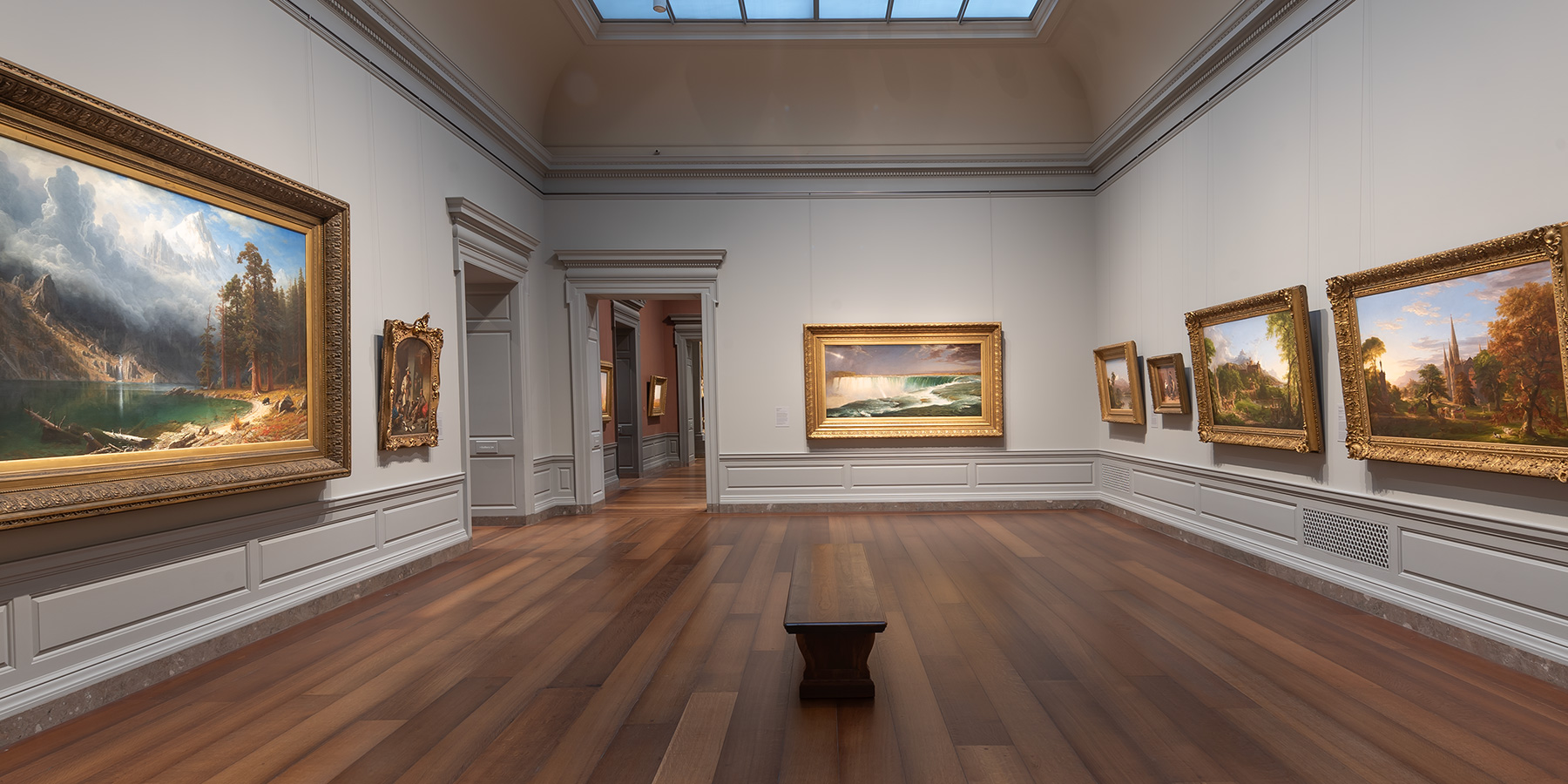This room honors the Corcoran Gallery of Art, the first institution in the United States created specifically as an art museum. Founded in Washington, DC, in 1869, the Corcoran Gallery remained a vital part of our city for nearly 150 years. After the museum closed in 2014, the National Gallery of Art took responsibility for the collection, ultimately acquiring over 9,000 objects.
The paintings in this gallery include views of everyday life as well as landscapes by painters later known as the Hudson River School. They were among the earliest works to enter the Corcoran collection, all under the guidance of its founder. William Wilson Corcoran (1798–1888) was a Washington, DC, banker and philanthropist and one of the country’s first collectors of American art.
Corcoran was passionate about sharing his collection. In the mid-1850s, he opened the picture gallery in his home for public viewing several times a week. He soon built his namesake museum with the mission of “encouraging American genius.” Originally across the street from the White House, it later moved nearby to make room for the growing collection and newly founded art school (now part of George Washington University). The Corcoran Gallery of Art created a model for local and national support of the arts. It was the first arts institution given to the American people by an individual, and Corcoran thought of it as a national gallery.
